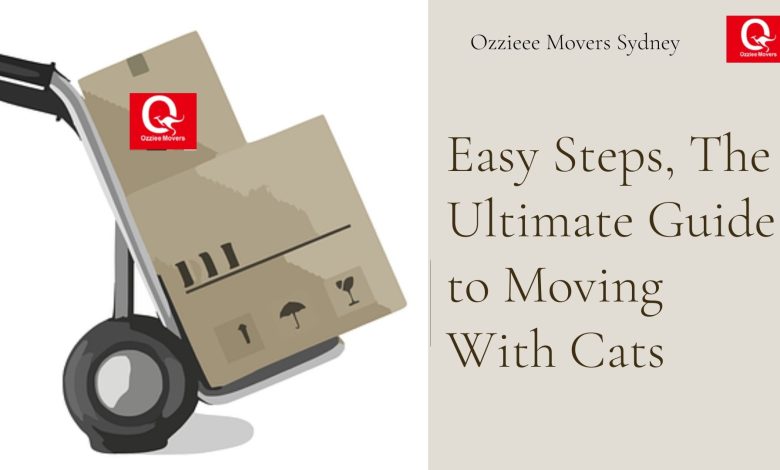
Preparing for your relocation, especially if you’re moving with a pet, can take various form. Cats, for example, are territorial creatures. They are usually averse to even minor changes, let alone a major one like relocating to a new home. Simple steps can assist them have a better experience and provide you peace of mind knowing you’re doing everything you can for your kitty companion.
1. Determine The Logistics of Transportation and Moving
Relocating cats across town will not be the same as moving them across the nation. You can just transport your cat in a crate as long as the travel isn’t more than a couple hours long – your kitty should be alright without any toilet breaks. Also make sure the Sydney removal services you book are in your budget. Longer relocations will necessitate greater planning. Here’s how to get ready for some of the most prevalent scenarios.
- Lengthy-distance driving with cats:
If you and your cat have a long drive ahead of you, think about where they’ll go to the toilet. Set up a large cage with portable litter boxes and food bowls, and make sure your cat is familiar with the arrangement ahead of time. In the weeks coming up to the relocation, spend a lot of time in the car with them.
- Staying in hotels:
If you’re going on a multi-day trip, you might find yourself staying in a hotel with your cat. There are many cat-friendly hotels and motels across the country, but you should do your research first. Even if you discover a hotel that appears to be pet-friendly, phone to see if they allow cats and if there are any additional fees.
- Flying with cats:
You can fly with your cat if you’re relocating internationally or need to fly to your new home, but there are some additional considerations to consider. To begin, discover an airline that permits cats to fly in the cabin and buy a carrier that meets their requirements. Purchase tickets as soon as possible, as many airlines restrict the number of animals permitted each flight. You’ll need to get your pet’s immunisation records, a health certificate, and maybe customs paperwork in order.
- Companies that transport pets include:
Using a pet transportation service can help to simplify the process of moving cats. They shoulder some of the strain of planning, such as filling out paperwork and arranging transportation. Some companies provide thorough door-to-door delivery; however, these services can be costly, and you won’t be able to watch and soothe your pet while travelling.If you plan to hire a pet shipping company, do your homework and find one that is licenced, experienced, and employs expert animal handlers.
- In the weeks leading up to your move, you’ll surely be busy packing and preparing your home. There are a few pet-related duties to add to your to-do list while moving with cats. Most importantly, make one last appointment with your veterinarian to ensure that your cat is up to date on all shots and healthy enough to travel. This is also the time to inquire for any prescriptions and obtain a copy of your cat’s paperwork to give to your new veterinarian.
- Take use of their knowledge while you’re there. Inquire about any last-minute concerns you may have about travelling with your cat and settling them into a new home.
- Your veterinarian, especially if they know your pet well, may be able to offer advice on how to make the transition easier.
3. Get Your Cat used to Being in the Crate
Prepare your cat to spend time in the crate well in advance of your vacation. Begin by leaving the crate open for your cat to investigate. You can start feeding them inside the carrier if they’re familiar with it. This will help them develop a positive relationship with the crate, making them feel more at ease and secure inside. Catnip sprinkled in and around the crate can also assist.
You’ll also want your cat to become acquainted with your car. Start by sitting in the car for a few minutes at a time with your cat in the box – don’t even turn the car on at first. After a week or so of this, you can attempt starting the engine and taking a brief drive around the block with your cat. By gradually acclimating to the trip, you can guarantee that your cat is not unduly anxious in the car on moving day.
4. Create a Moving day Schedule
Post your cat in a quiet room with a litter box and water on moving day, and put a sign on the door instructing movers not to open it. When it’s time to leave, put your cat in their carrier, give them any medication they require, and tie their collar or harness securely.
You can continue your journey as planned from here. If you open your cat’s carrier unless absolutely essential, your cat may flee if startled.
When you go to your new house, put your cat’s litter box, toys, food, and water in a room away from the action. Put another note on the door instructing movers not to open it..
5. Get used to your New Surroundings.
Every cat reacts to movement in a unique way. Some will hide for several days, while others will be up and about in a few of hours. Both reactions are natural; simply allow your cat to move at his or her own pace.
6. Look for Professional Movers
Hiring professional packing services in Sydney is probably the most helpful suggestion of all. While you are busy moving yourself and your pet, OZZIEE MOVERS will make sure they move your goods safe. They are probably the most expert and cost effective movers of Sydney.
These steps make it easier for everyone involved to move your feline to a new home. With the correct preparation, moving will feel less like herding cats than it actually is.





